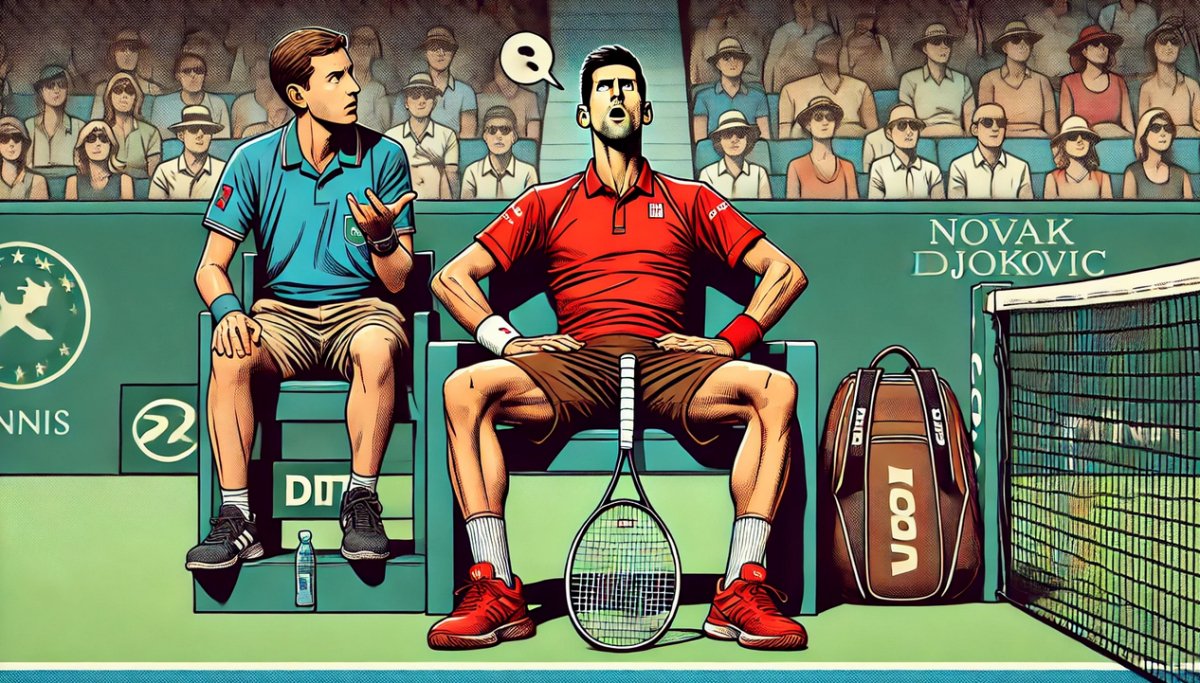In recent tennis tournaments, a significant rule change regarding the timing between points has become a focal point of discussion and discontent among ATP players. Traditionally, the 25-second serve clock began once the chair umpire announced the score, allowing players a brief respite after long rallies or during moments of high crowd noise. However, the new rule, which has been trialed at events like Queen's Club and Halle, dictates that the shot clock starts immediately after the previous point ends, leading to a wave of complaints from top players.
Alcaraz and Djokovic Voice Concerns
Carlos Alcaraz, among others, has been vocal about his dissatisfaction. During his match at Queen's Club, Alcaraz described the rule as "crazy," expressing frustration over the lack of time to even collect balls after finishing a point at the net. His comments highlight a rushed feeling that could potentially affect the quality of play and player recovery between points.
Novak Djokovic also chimed in on the issue at the Rolex Shanghai Masters, pointing out the sudden implementation without prior notification to the players, which adds to the growing list of grievances. Players like Djokovic are not just fighting the clock but also the lack of communication from ATP regarding rule changes that directly impact their performance.
Tsitsipas vs. Medvedev: A Heated Exchange
During a particularly tense match at the 2024 Shanghai Masters between Stefanos Tsitsipas and Daniil Medvedev, an argument erupted that caught the attention of tennis fans worldwide. Tsitsipas, known for his passionate play, found himself at odds with the chair umpire, Fergus Murphy, over a time violation issue, which has become a point of contention with the new shot clock rules in tennis.
The situation unfolded when Tsitsipas was given a time violation during a critical moment of the match, leading to a break in his serve. Feeling unfairly treated, Tsitsipas engaged in a heated exchange with Murphy. He argued that he was being singled out for time violations, a claim which he felt was unjust, especially given his assertion of being one of the most consistent players regarding time management between points.
Sponsored content
Balancing Pace and Player Well-being
The underlying issue seems to be the balance between maintaining the pace of play and ensuring player well-being and match quality. Critics argue that tennis, known for its strategic pauses and mental gameplay as much as for physical prowess, might be losing a bit of its character with such stringent time management.
The ATP's intention behind the rule might be to speed up the game, appealing to a broader audience with faster play. However, the backlash suggests a need for reconsideration or at least a more flexible application of the rule. Players, who are at the heart of the sport, feel their preparation and recovery time is being unnecessarily curtailed.
This rule change has sparked a conversation not just about time management in tennis but about how rules are introduced in the sport. The dialogue between players, the ATP, and fans through platforms like X indicates a desire for a collaborative approach in rule-making, where player feedback is integral rather than incidental.
The Future of the Shot Clock Rule
As the tennis community looks forward, it remains to be seen if the ATP will revisit this rule, potentially finding a middle ground where the game's pace and the players' needs are harmoniously balanced. Until then, the shot clock will continue to tick, both as a literal timer in games and as a symbolic countdown to how this controversy will be resolved in the world of professional tennis.
Sponsored content













Leave a comment
All comments are moderated before being published.
This site is protected by hCaptcha and the hCaptcha Privacy Policy and Terms of Service apply.